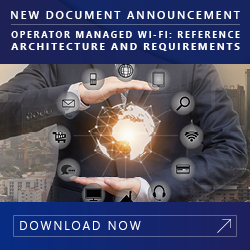Resources Centre
CATEGORIES
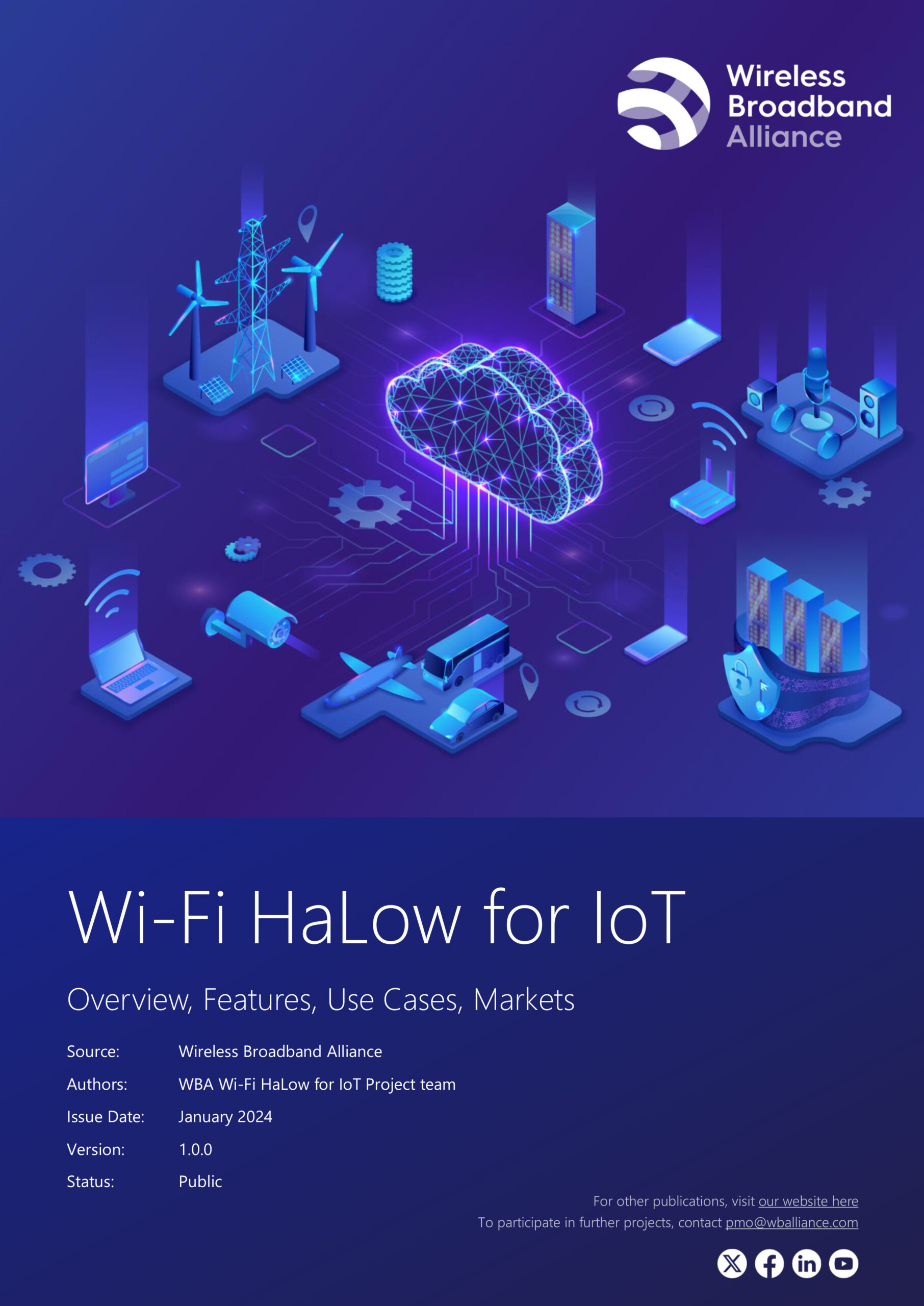
Wi-Fi HaLow for IoT
The “Wi-Fi HaLow for IoT” white paper gives an overview of the features, expected use cases, and markets for Wi-Fi HaLow. Wi-Fi HaLow enables extended ranges, improved penetration capabilities, extended battery life, enhanced device density, heightened peak throughput, minimized end-to-end delay, a higher level of security, ease of installation and management, and elevated data throughput in IoT scenarios.
WBA’s Wi-Fi HaLow for IoT program has moved into a new phase, testing 802.11ah Wi-Fi HaLow solutions in real-world use cases with contributing industry members. These include a range of applications including Smart Home, Smart City, Building Automation, Smart Retail, Industrial IoT, and Agriculture Technology.
The project team will test the use cases and applications to demonstrate the benefits and performance Wi-Fi HaLow has in the real world, including understanding crucial metrics such as coverage areas, data rates, throughput, and signal reliability. A detailed analysis from the trials will inform new deployment guides, helping wider industry successfully roll-out IoT solutions, without having to resort to proprietary or non-IP technologies to gain the automation, insights and business benefits that IoT promises to deliver.
For organizations eager to share relevant use cases and learning, we encourage you to reach out to the WBA Program Management Office (PMO) at pmo@wballiance.com. Be part of shaping the future of Wi-Fi.
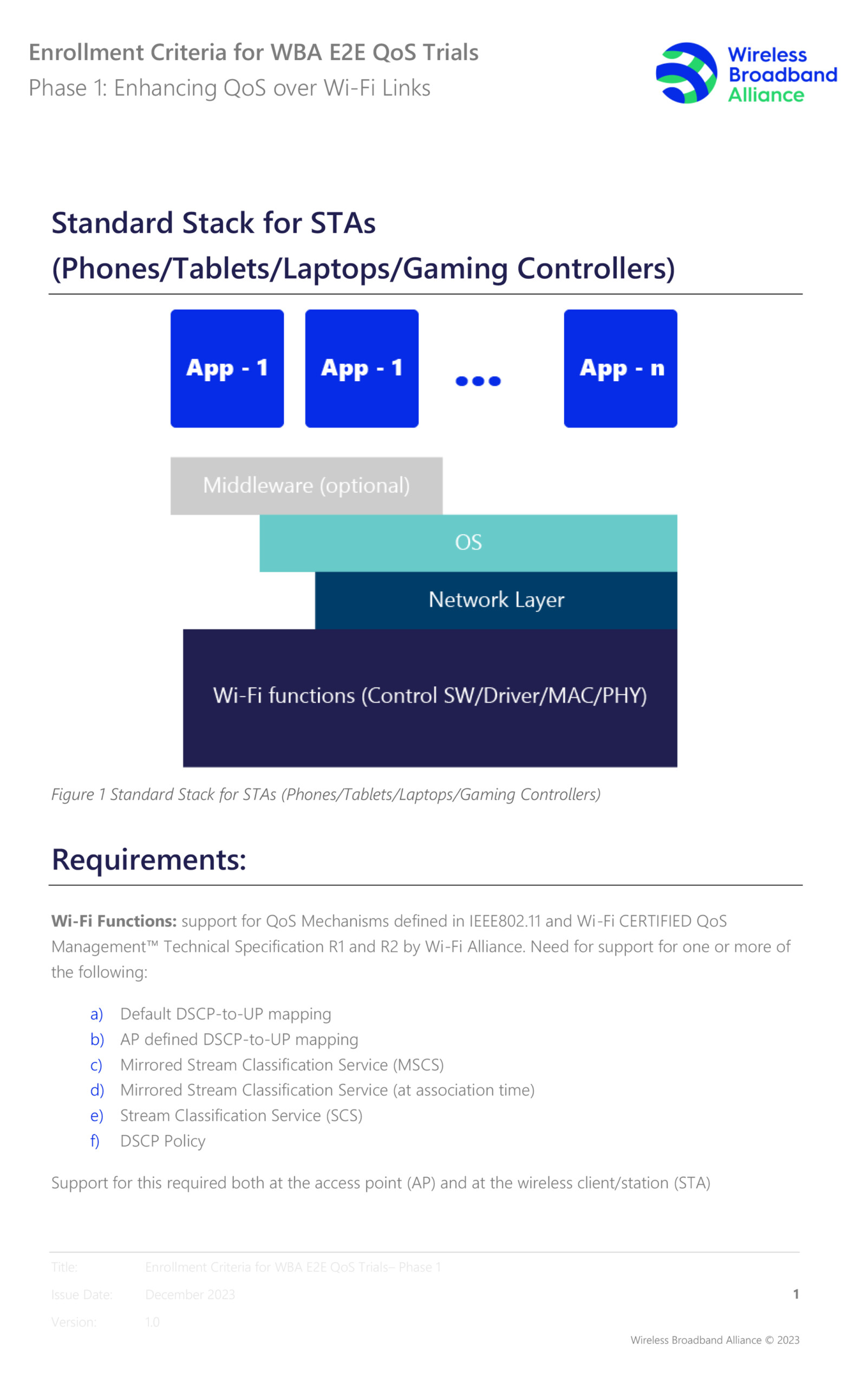
Enrollment Criteria for WBA E2E QoS Trials Phase 1: Enhancing QoS over Wi-Fi Links
The document outlines the enrollment criteria for the WBA E2E (End-to-End) QoS (Quality of Service) Trials, specifically focusing on Phase 1, which aims to enhance QoS over Wi-Fi links. Learn more about WBA E2E QoS Project.
Join the E2E QoS Trials – Phase 1: Improving QoS over Wi-Fi Links
As we look forward to 2024, the WBA invites industry players to join the Wireless Broadband Alliance and become integral participants in the E2E Wi-Fi QoS program. This phase is dedicated to enhancing Quality of Service over Wi-Fi links. Our upcoming initiatives include completing the test plan, initiating trials, and unveiling Deployment Guidelines. Additionally, we will concentrate on consolidating efforts, crafting guidelines for deployment, and delving into Low Latency Services (L4S) to cater to applications with low latency requirements.
For organizations eager to engage in this exciting project, we encourage you to reach out to the WBA Program Management Office (PMO) at pmo@wballiance.com. Be part of shaping the future of Wi-Fi.
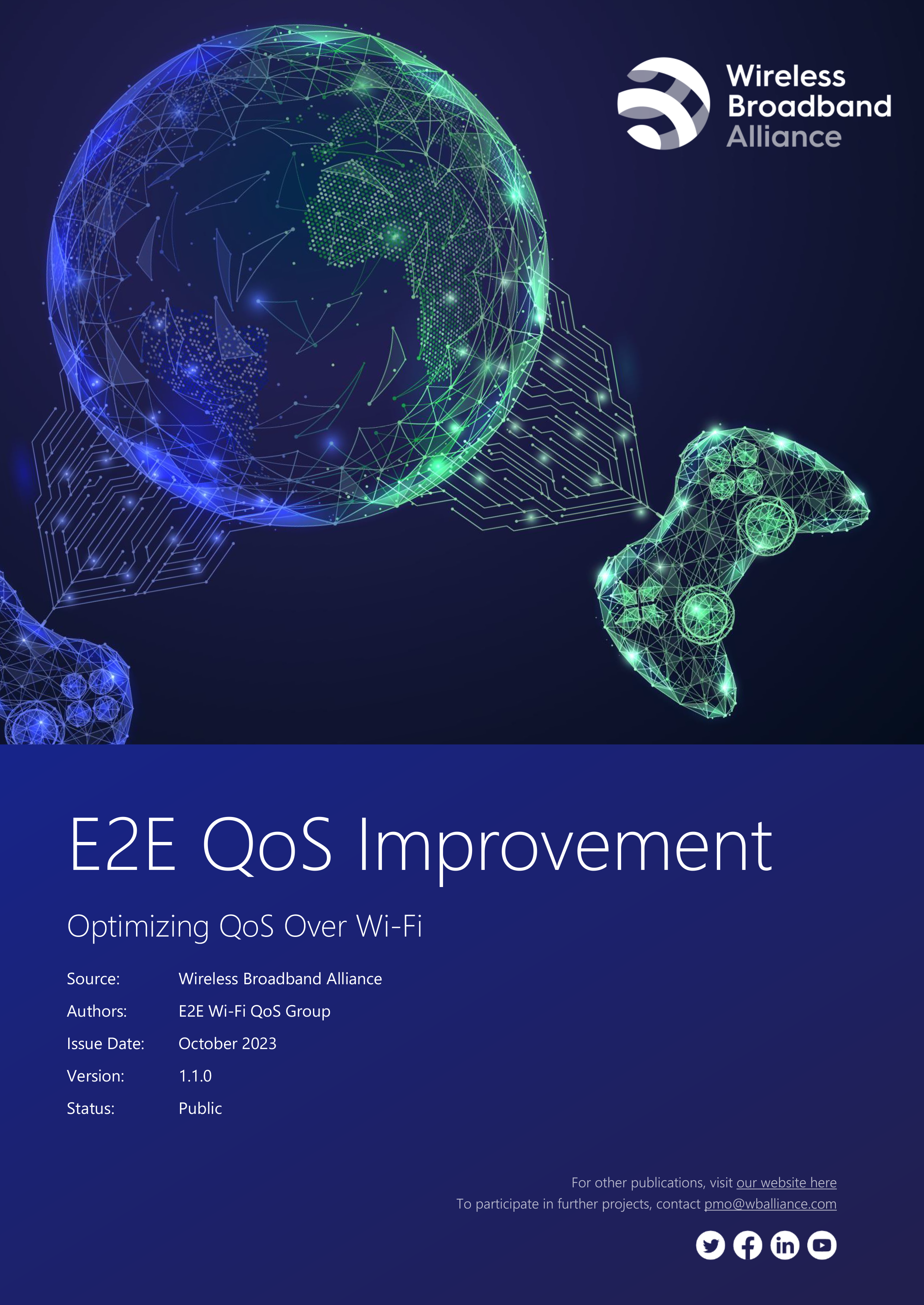
E2E QoS Improvement: Optimizing QoS Over Wi-Fi
Operators and Enterprises can use QoS as a powerful market differentiator to attract and retain customers, such as business travelers who need reliable, high-performance Wi-Fi in airports. Enterprises need Wi-Fi networks that can provide the right QoS for each application, such as prioritizing HD video collaboration sessions over email and file transfers. And home Wi-Fi networks need to balance a variety of bandwidth-intensive, latency-sensitive applications, including multiplayer gaming, 4K streaming and remote work videoconferencing — often all simultaneously.
E2E QoS Improvement: Optimizing QoS Over Wi-Fi report explores how network operators can meet the unique QoS requirements for a wide variety of use cases and deployments, including gaming, residential broadband, live 4K video, enterprise, airports, stadiums and more.
As its name implies, end-to-end (E2E) QoS includes the application, such as cloud gaming or streaming video, Wi-Fi network elements such as access points (APs) and Wi-Fi client devices (like mobile phones and laptops). The E2E concept is about providing both visibility into and control over the user experience by leveraging QoS mechanisms at each step of a packet’s journey across the Wi-Fi ecosystem.
The paper discusses the use of ITU-T SG12 recommendations and corresponding tools to access objective mean opinion scores (MOS) the QoS streams during the trials with outcomes from the trials.
Additional future, WBA work includes expanding network topology to incorporate Wi-Fi mesh (Wi-Fi Alliance EasyMesh), extending QoS management to non-Wi-Fi links for E2E QoS and integrating new QoS management mechanisms from ongoing work in the IEEE802.11 Working Group and/or Wi-Fi Alliance QoS Management TG, and/or IETF.
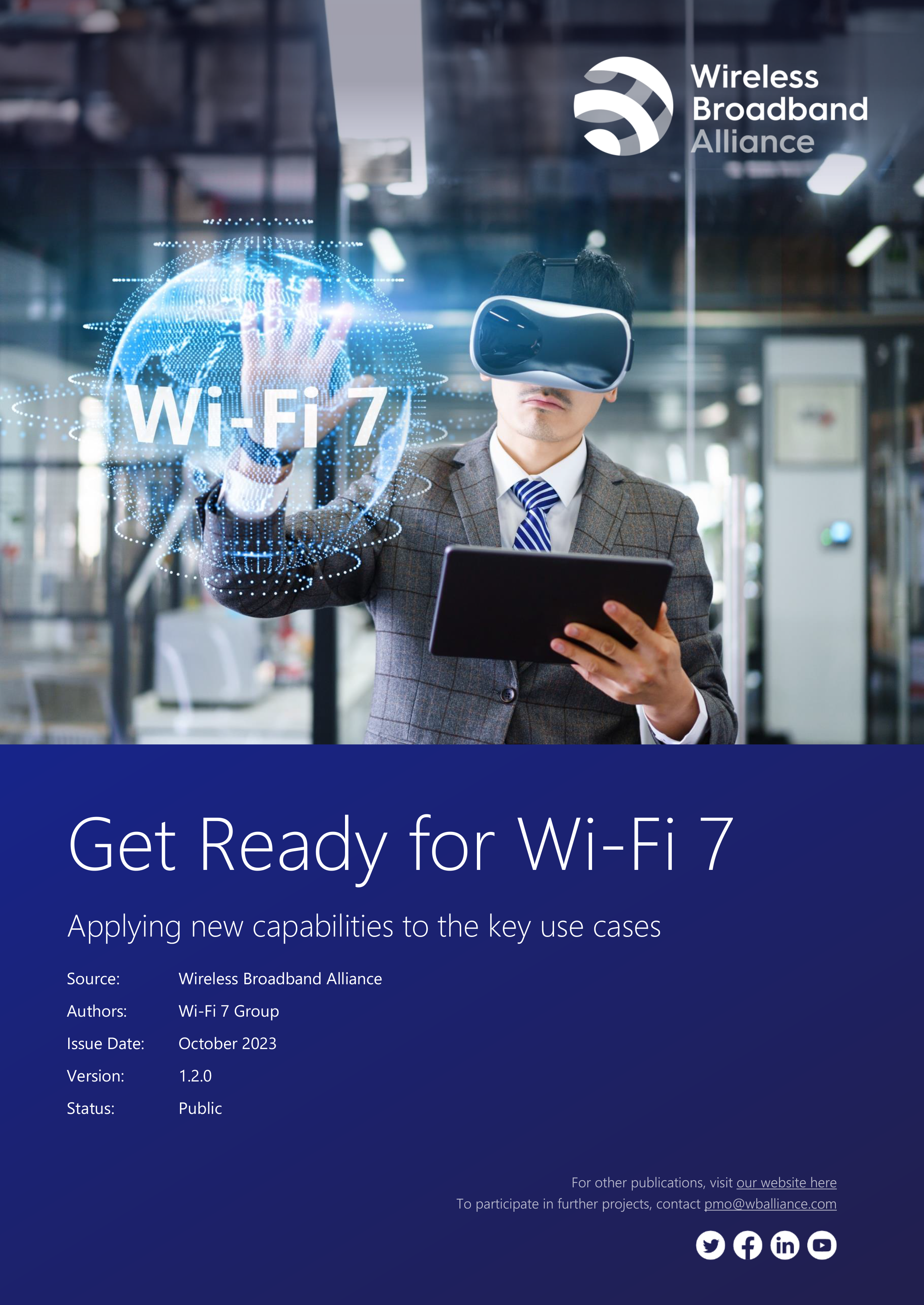
Get Ready for Wi-Fi 7- Applying New Capabilities to the Key Use Cases
- Double the bandwidth and three times the speed of Wi-Fi 6
- Advanced support for latency-sensitive use cases
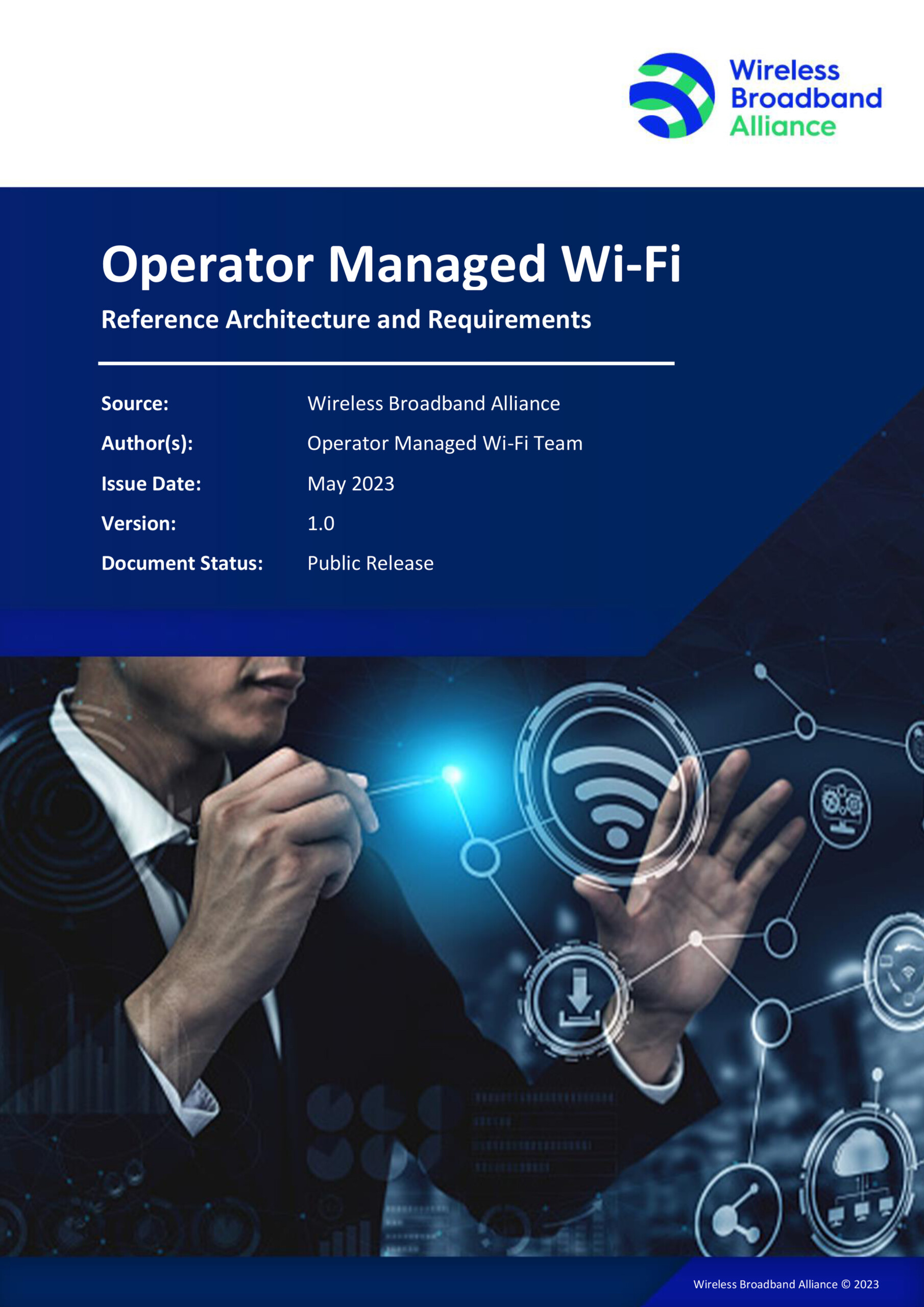
Operator Managed Wi-Fi Reference Architecture and Requirements
With the increasing prevalence of Wi-Fi as the primary method of internet connectivity, the term “Wi-Fi” has become synonymous with the internet itself. Consequently, users perceive their internet quality of experience (QoE) as synonymous with Wi-Fi QoE. Users no longer differentiate between Wi-Fi service and internet service, expecting their Wi-Fi issues to be resolved by their internet service provider (ISP). This shift has turned Wi-Fi into a managed service, specifically managed by the operator, hence the term “operator-managed.”
This is WBA’s first document on operator-managed Wi-Fi, and it is anticipated that later phases of work will expand the scope of the requirements hereby defined.
The technical paper, “Operator Managed Wi-Fi: Reference Architecture and Requirements” outlines a new operator-managed Wi-Fi (OMWi) reference architecture. The proposed framework will combine multiple available standards to streamline Wi-Fi data collection, Wi-Fi management, configuration, and optimization of home networks, simplifying the analysis and decision-making process for carriers.
This paper represents the first phase of that journey, presenting an operator-managed Wi-Fi reference architecture that combines the benefits of all available standards, including Wi-Fi Alliance (WFA) Wi-Fi EasyMesh™, Wi-Fi CERTIFIED Data Elements™, and Broadband Forum (BBF) User Services Platform (USP) Data Models TR-369 and TR-181. Wi-Fi Alliance EasyMesh™, for instance, can be utilized as the standard interface for Wi-Fi data collection, Wi-Fi management, configuration, and optimization on home networks with a standalone gateway.
Register now for the upcoming webinar on 6th June, 2023 “Optimizing Wi-Fi Experience with Operator-Managed Networks.”
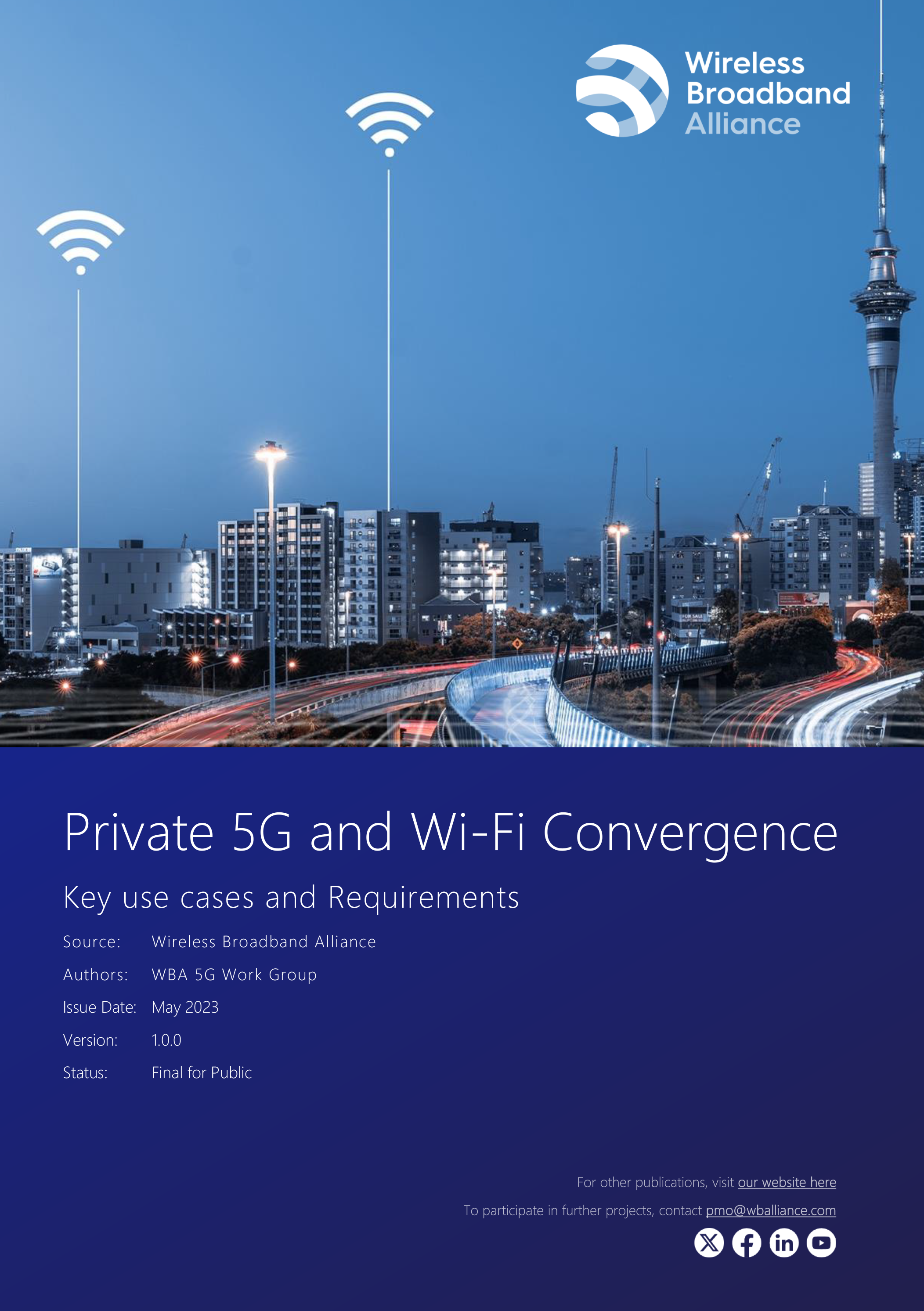
Private 5G And Wi-Fi Convergence – Key Use Cases And Requirements
The paper outlines four possible deployment models for bringing 5G into enterprise networks, as well as the key considerations for choosing each one, such as the nature of the application, latency in the core and RAN interfaces, and the location and manageability of services. The four models are as follows:
- On-premises core network and application services – Data sovereignty, site resiliency, and application latency requirements are ensured by keeping all traffic on-prem. Access to conventional enterprise cloud-based applications is enabled, subject to normal limitations around resiliency and latency.
- On-Premises user plane and application services – The paper outlines several reasons to move the control plane to the cloud, such as the need for control plane aggregation in a multi-site 5G core network deployment. All other 5G elements and the application services are on-premises, except the 5G control plane elements.
- Cloud-based core network and application services – User plane traffic from 5G devices will always have to enter the cloud. In such deployment models, it may be possible to move the 5G core network and user plane elements to the cloud where the applications services are located.
- The hybrid model – There are some application services in the cloud, and some are on-prem. To support such a model, there can be two different Data Network Names (DNN’s), one for supporting applications that are on-premises and another for supporting applications in the cloud.
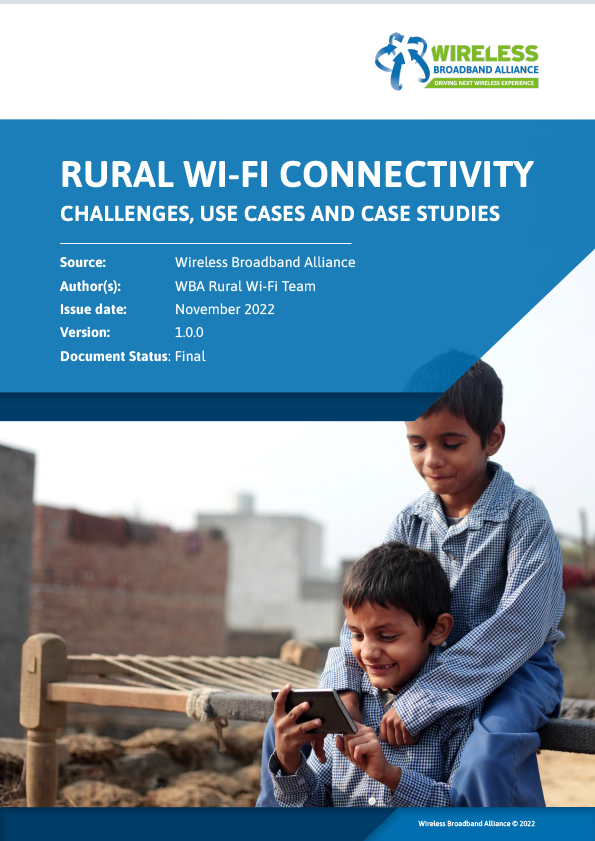
Rural Wi-Fi Connectivity
Wi-Fi is Essential to Bridge the Digital Divide in Rural Areas
In this Rural Wi-Fi Connectivity: Challenges, Use Cases and Case Studies, it sets out how mobile operators, fiber providers & cable companies should be using Wi-Fi to serve the 1 billion consumers & businesses where copper, fiber & cellular struggle technologically and economically.
This report also demonstrates why Wi-Fi is the most economical and effective technology for bridging the digital divide in small towns, remote communities and other sparsely populated areas, utilising the best available backhaul solution.
We discuss the critical factors applicable to Wi-Fi networks in rural areas including:
- Broadband deployment challenges
- Relevant use cases
- Best practices in the ecosystem
- Importance of an unlicensed spectrum for Wi-Fi to connect the unconnected
- Real-world case studies, and
- Business models from different regions
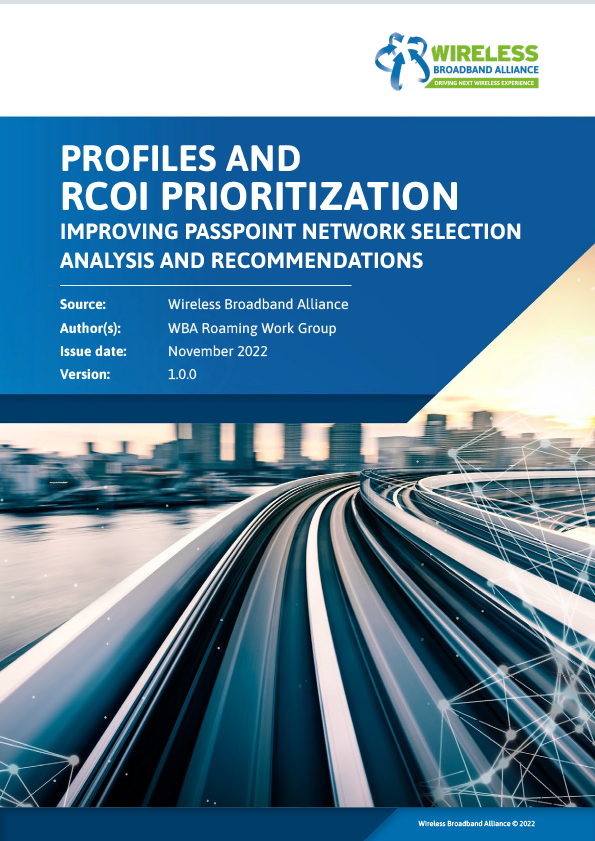
Profiles and RCOI Prioritization – Improving Passpoint Network Selection
With the expansion of Passpoint networks and WBA OpenRoaming™, the landscape of identity providers is undergoing a paradigm shift.
Wi-Fi roaming based on Wi-Fi Alliance CERTIFIED Passpoint® and IEEE specifications is experiencing rapid growth. While these standards and certifications ensure interoperability in the Wi-Fi ecosystem, many implementation details are left to Wi-Fi equipment, device vendors and network providers.
As Passpoint adoption expands, users will frequently subscribe to multiple Passpoint identity providers, and many venues will advertise multiple Passpoint services. In these scenarios, different players in the ecosystem – including network providers, identity providers, OS and device vendors and the end-user of the device – may have different requirements for the prioritization of Wireless Local Area Networks (WLAN) in the venue and Passpoint subscriptions on the device.
This whitepaper identifies common use cases and recommendations on the best practices for the ecosystem. The paper also provides guidance to implementers using Passpoint technology.

In-Flight Wi-Fi Connectivity
“In-Flight Wi-Fi Connectivity: Improving Passenger Experience, Engagement and Uptake,” explores how airlines, service providers and other stakeholders can make it faster and easier for travellers to get and stay connected.
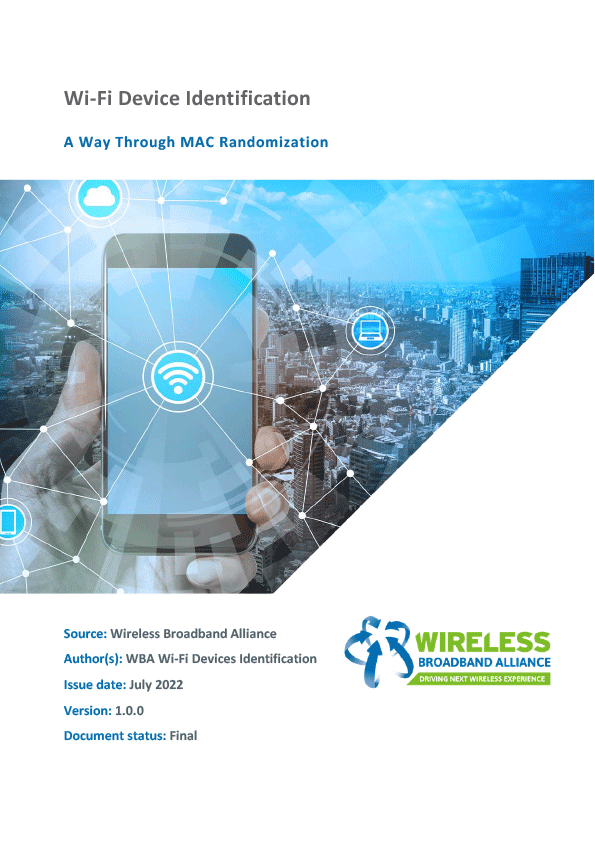
Wi-Fi Device Identification – A Way Through MAC Randomization
Until now, many Wi-Fi networks have relied on the original permanence of device MAC addresses to facilitate access to or management of the network.
Without a new way to identify devices on Wi-Fi networks, the networks will cease to be as manageable and/or as functional as they were. This will have customer experience impacts as well as financial ones.



